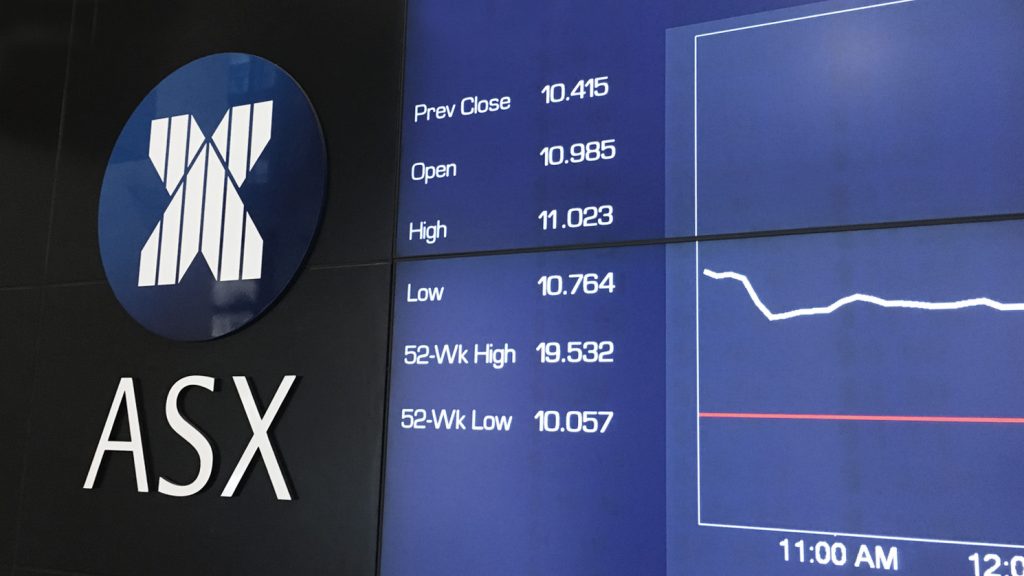Unlocking Opportunities: A Comprehensive Guide to Investing in the Asx 200 stock index

Navigating the world of investing can often feel like a daunting venture, especially when it comes to stock markets. Among the vibrant tapestry of global exchanges, the ASX 200 stands out as a beacon of opportunity for both seasoned investors and newcomers alike. This comprehensive guide will lead you through the essential strategies and insights needed to unlock the potential of the Australian Securities Exchange. Whether you’re looking to diversify your portfolio or capitalize on growth opportunities, understanding the ASX 200 is the first step toward making informed investment decisions.
Dive into the nuances of this index, explore the key sectors, and discover how to leverage its performance to your advantage. In a landscape constantly shaped by economic shifts and innovations, empowering yourself with knowledge is your greatest ally. Join us as we delve into the exciting world of ASX 200 investing and uncover the paths to financial success.
Understanding the Asx 200 stock index
The S&P/ASX 200 Index (ASX: XJO) is Australia’s premier stock market benchmark, comprising the 200 largest and most liquid companies listed on the Australian Securities Exchange (ASX)。 Launched in April 2000, it covers approximately 80% of Australia’s equity market capitalization, making it a critical gauge of the nation’s economic health. Unlike indices weighted by market capitalization, the ASX 200 uses a float-adjusted methodology, ensuring only freely tradable shares influence its value. This design helps investors track the performance of major sectors, from financials to resources, while maintaining transparency and relevance.
Benefits of Investing in the Asx 200 stock index
1. Diversification: The index spans multiple sectors—financials (28% weight), materials (22%), healthcare, and technology—reducing reliance on single stocks or industries. For example, holding ASX 200 ETFs exposes investors to giants like Commonwealth Bank and BHP Group simultaneously.
2. Liquidity: High trading volumes ensure seamless entry and exit, with instruments like ETFs (e.g., iShares S&P/ASX 200) and CFDs offering flexibility.
3. Long-Term Growth: Historically, the ASX 200 has delivered an average annual return of ~10%, including dividends, with compounding turning $100 weekly investments into $164,505 over 20 years.
4. Dividend Income: Many constituents, such as ANZ Group (6% yield) and Woodside Energy (11.1% yield), provide steady passive income.
Key Sectors and Companies within the Asx 200 stock index
The index is dominated by financials and materials, reflecting Australia’s resource-rich economy and robust banking sector. Top companies include:
Commonwealth Bank (CBA): Australia’s largest bank, pivotal to the financial sector.
BHP Group (BHP): A global mining leader, driving materials sector performance.
CSL Limited (CSL): A healthcare titan specializing in biotherapeutics, with consistent growth.
Macquarie Group (MQG): A diversified financial services firm with global reach.
Recent additions like Salesforce (replacing ExxonMobil in 2020) highlight the index’s adaptability to market trends.
How to Get Started with ASX 200 Investing
1. Choose a Broker: Platforms like eToro or CMC Markets offer low fees, real-time data, and user-friendly interfaces. Ensure your broker supports ASX 200 ETFs or CFDs.
2. Select Investment Vehicles:
ETFs: iShares S&P/ASX 200 ETF (IOZ) mirrors the index with a 0.09% fee.
CFDs: Trade index movements without owning underlying assets.
3. Fund Your Account: Deposit AUD via bank transfer or credit card, adhering to minimum requirements.
4. Monitor Trends: Use tools like TradingView for technical analysis or economic calendars for event tracking.
Investment Strategies for the ASX 200
1. Long-Term Buy-and-Hold: Focus on blue-chip stocks like CSL or BHP, reinvesting dividends to harness compounding.
2. Swing Trading: Capitalize on short-term volatility using indicators like RSI or Bollinger Bands. For instance, the index surged 10% after hitting a 2025 low of 8,100.
3. Sector Rotation: Shift allocations based on macroeconomic trends. Energy and banks underperformed in 2025 due to weak earnings, while insurance and tech thrived.
4. Dollar-Cost Averaging: Mitigate timing risks by investing fixed amounts regularly.
Risks and Challenges of ASX 200 Investments
Market Volatility: The index dropped 33% during the 2020 pandemic and 19% in 2022 amid rate hikes.
Sector Concentration: Overexposure to financials and materials amplifies risks during sector-specific downturns.
Global Factors: Commodity prices (e.g., iron ore) and geopolitical tensions (e.g., U.S.-China trade) heavily influence performance.
Regulatory Changes: Stricter banking or environmental policies can impact earnings.
Tools and Resources for ASX 200 Investors
1. Charting Platforms: TradingView and MetaTrader offer real-time analysis with tools like Fibonacci retracements.
2. ETF Options: Betashares Australia 200 ETF (A200) and Vanguard Australian Shares Index ETF (VAS) provide low-cost exposure.
3. Broker Research: Leverage UBS or Morgan Stanley reports for earnings forecasts and sector insights.
4. Economic Calendars: Track key events like RBA rate decisions or U.S. CPI releases.
Case Studies: Successful ASX 200 Investments
1. CSL Limited: Shares surged 148% YTD in 2024 due to AI-driven demand for plasma therapies.
2. BHP Group: Capitalized on rising iron ore prices, delivering consistent dividends and a 15% annual return since 2020.
3. Pro Medicus (PME): A healthcare tech firm that grew 300% over five years, benefiting from digitization trends.
Conclusion and Future Outlook for ASX 200 Investors
The ASX 200 remains a cornerstone of Australian investing, offering diversification and growth potential. However, 2025 brings challenges: UBS warns of vulnerability due to slowing GDP growth and potential earnings downgrades, revising its year-end target to 8,150. Investors should prioritize quality stocks with domestic focus (e.g., Seven Group, Steadfast) and stay agile amid trade uncertainties. Long-term trends like AI and green energy may drive future gains, but risk management—through stop-loss orders and diversification—is crucial. By combining strategic allocation with disciplined execution, investors can navigate volatility and capitalize on Australia’s economic resilience.